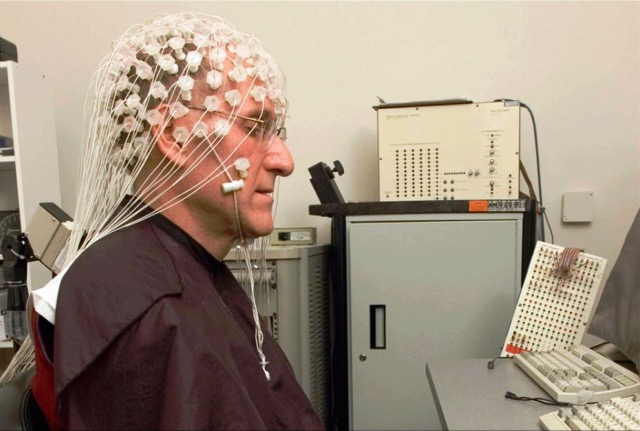Catherine Lau, Biology & Life Sciences co-editor
Take a deep breath, clear your mind and be aware of your breathing. These instructions, while seemingly simple, are often easier said than done. Yet with practice, this mental exercise derived from meditation and mindfulness can improve cognitive function and overall wellbeing.
While they are rooted in Buddhist tradition, meditation and mindfulness are increasingly practiced in North America. What some may consider as just another fad is gaining traction in the research realm, as demonstrated by the growing body of literature in the past decade. Meditation is used to regulate our attention, which can help us become more adaptable in various situations and promote our well being. Mindfulness is a general, non-judgmental awareness of the world, and can be achieved through meditation or what is better known as mindfulness meditation.
During the past two decades, researchers have investigated how these mental exercises can change the brain. To better understand how the brain responds to meditation, neuroscientists turned to the experts: Buddhist monks. Inspired by a meeting with the Dalai Lama, Dr. Richard Davidson, a neuroscientist at the University of Wisconsin-Madison, began to use modern neuroscience tools to study the brain waves of Buddhist monks during meditation, particularly the gamma-band frequencies. These brain waves are thought to be involved in mental processes such as attention, short-term memory, and conscious perception.
Buddhist monks dedicate most of their lives to meditation and have been an important population for neuroscientists to study as they try to understand the mechanisms at play during meditation. (Photo: Tevaprapas Wikimedia Commons 3.0 )
The results showed that Buddhist monks exhibited an increase in gamma synchronicity during meditation and also have a higher resting baseline (i.e., even before meditation) compared to control subjects who had no prior meditation experience. This finding suggests increased plasticity in their brains, which may induce long-term neural changes. Neuroplasticity or plasticity is a term used to describe how adaptable our brains can be in response to our experiences.
This type of research is gaining momentum in Canada. Researchers at the University of Victoria and University of British Columbia (Okanagan) are hoping to learn more about the brain activity of Tibetan monks and how the brain can be trained to gain long-lasting cognitive benefits. Although some studies have shown physical changes in the brain following meditation, such as increased volumes of gray matter or cortical thickness, these mental exercises can also enhance cognitive processes such as attention. Researchers have found that the anterior cingulate cortex (ACC), a region in the frontal lobe, is largely responsible for executive control, which entails planning, processing rules, paying attention to relevant stimuli and then initiating the correct response while inhibiting the incorrect one. Meditators with at least one year of meditation experience had greater executive control and increased activation in the ACC than non-meditators.
The positive effects of mental training on our wellbeing are of particular interest to medical practitioners looking for alternative therapies for patients coping with medical or psychological problems. Studies have shown that mindfulness meditation can reduce stress in cancer patients and are especially effective for mood disorders such as anxiety disorder.
One of the tests used to understand brain activity during meditation is the electroencephalogram or EEG, which uses electrodes to measure brain wave activity. (Photo: Antoine Lutz, Wikimedia Commons – Public Domain)
Mindfulness can also enhance stress reduction. One study demonstrated that Mindfulness-Based Stress Reduction is more effective at reducing anxiety than standard Stress Management Programs, when used to teach individuals how to live healthier lives despite their chronic condition. Similarly, Mindfulness-Based Cognitive Therapy (co-developed by University of Toronto professor, Dr. Zindel Segal) has demonstrated promising results by reducing the rates of relapse in patients who suffer from recurrent depression.
Meditation and mindfulness may also have benefits for other medical conditions, such as chronic pain. In a recent study, participants who practiced mindfulness meditation reported greater relief from heat-induced pain than the placebo group, who received a sham version of meditation. While these findings cannot yet be applied to chronic pain patients, they certainly pave the way for alternative treatments.
The benefits of meditation and mindfulness are now being implemented in educational environments to help young people de-stress.
The emerging evidence of the benefits of meditation and mindfulness has led to the development of mindfulness programs in educational settings to combat students’ stress. In Canada, students in both post-secondary institutions and secondary schools are expressing their concerns about the impact of stress on their academic performance and overall wellbeing. So, some schools are taking action by integrating mindfulness into the classroom or teaching the practice through workshops on campus. In addition, new apps such as “Smiling Mind“, “Headspace” and “Calm” are combining meditation and mindfulness with technology to increase access to these practices.
These days, we’re affected by stress at home, work, and school. However, learning to cope with stress is an important part of maintaining a healthy mind and body. Meditation and mindfulness may be a way for you to achieve this but it won’t happen overnight. As with anything, practice makes perfect. If you are new to meditation and mindfulness or would like to learn more about the research done in this field, check out this free online course given by Dr. Richard Davidson!
Header Image: Pixabay CC0






